The International Non-Profit Accounting Standard (INPAS) is set to be published in the second half of 2025. Designed to be stand-alone guidance, it ensures that preparers and auditors can easily access the financial reporting framework they need. Built on the IFRS for SMEs Accounting Standard as a foundation, INPAS has been developed to address key non-profit financial reporting issues. During its development, it was known as INPAG (Guidance).
With high-quality development, extensive consultation, and a rigorous due process, INPAS offers a credible, internationally applicable solution that regulatory bodies can adopt. By harmonising grant reporting, it also creates win-win benefits for both funders and NPOs, fostering transparency, trust, and efficiency across the sector.
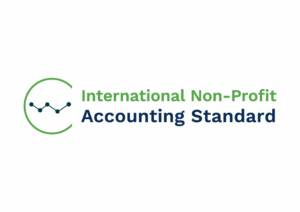
INPAS provides guidance about the preparation of whole-of-entity financial statements, to meet the needs of a broad range of readers.
INPAS Practice Guide 1 provides a harmonised format for project or grant reports, linked to the main financial statements.
The primary drivers for the adoption of INPAS will be countries and sector regulators, while funders will promote the use of Practice Guide 1.
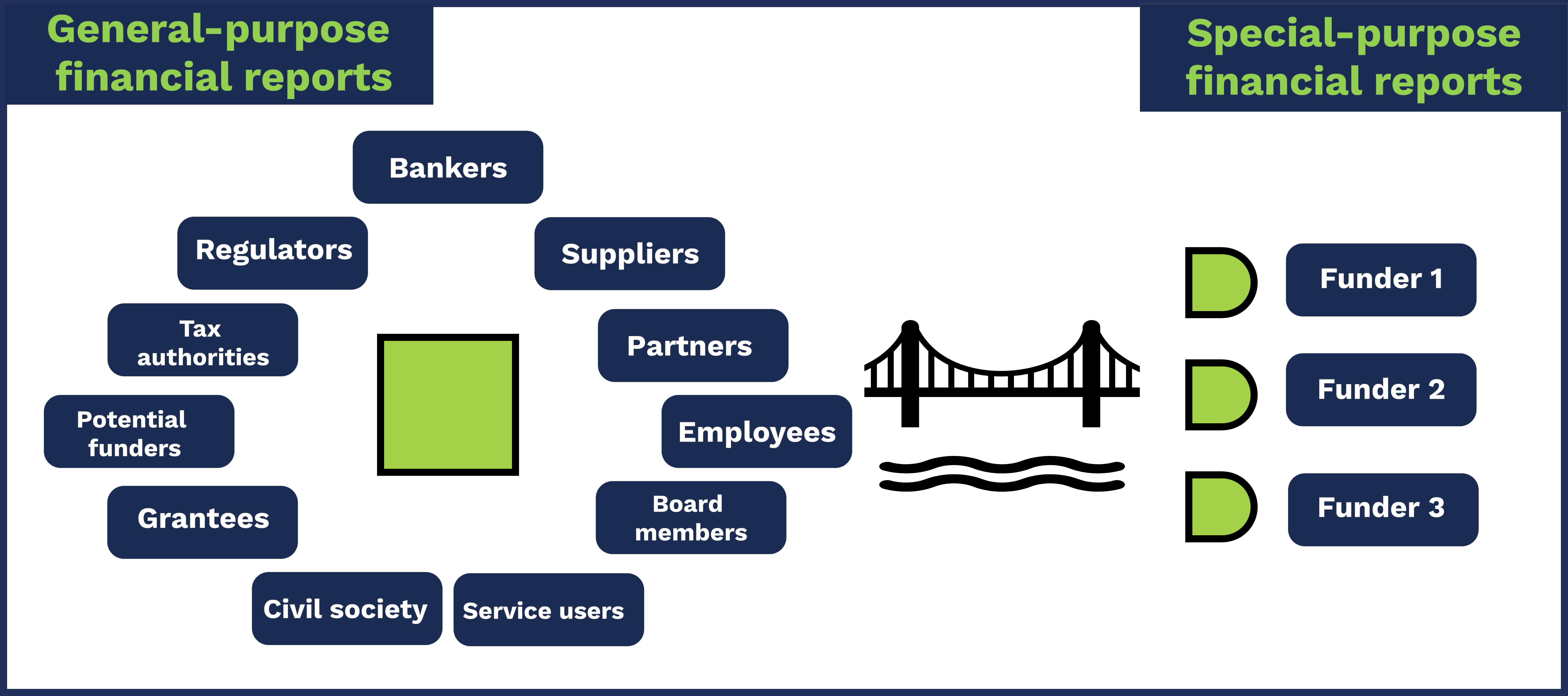
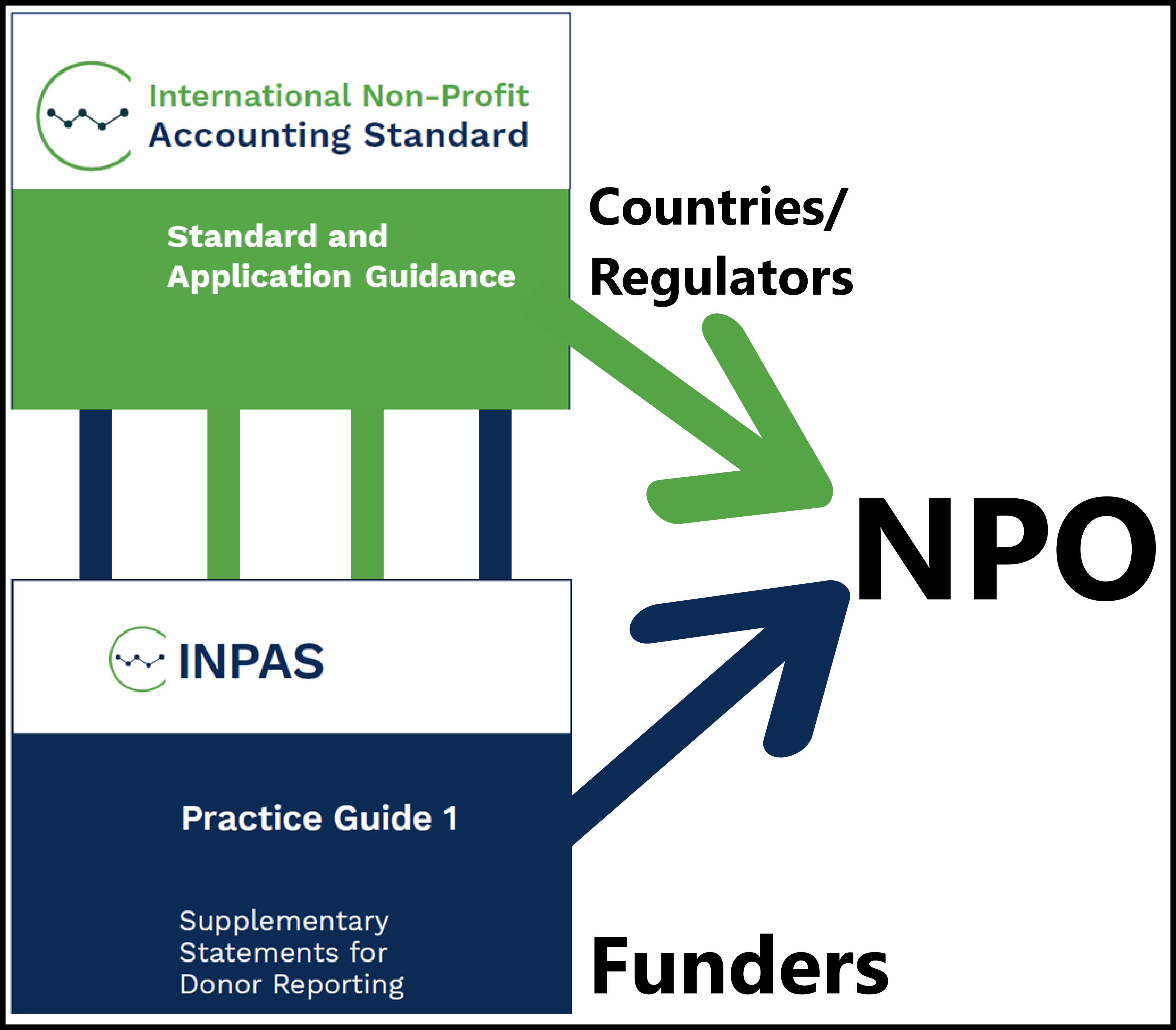
During its development, INPAS was known as INPAG (Guidance). In 2020 a Consultation Paper (CP) sought feedback on the key issues and proposals. During 2022-2024 an ‘Exposure Draft’ (that is proposed text, released for public comment) was issued in 3 parts (ED1, 2 & 3).
INPAS will be issued in the second half of 2025, ready to be adopted.
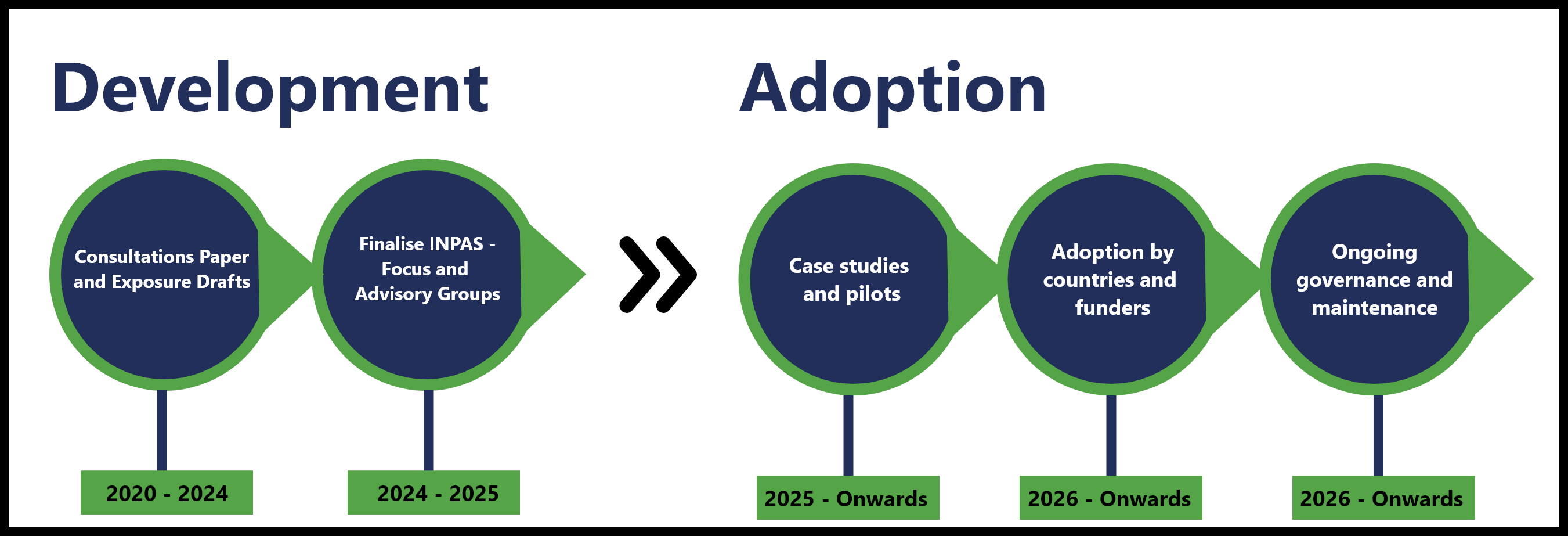
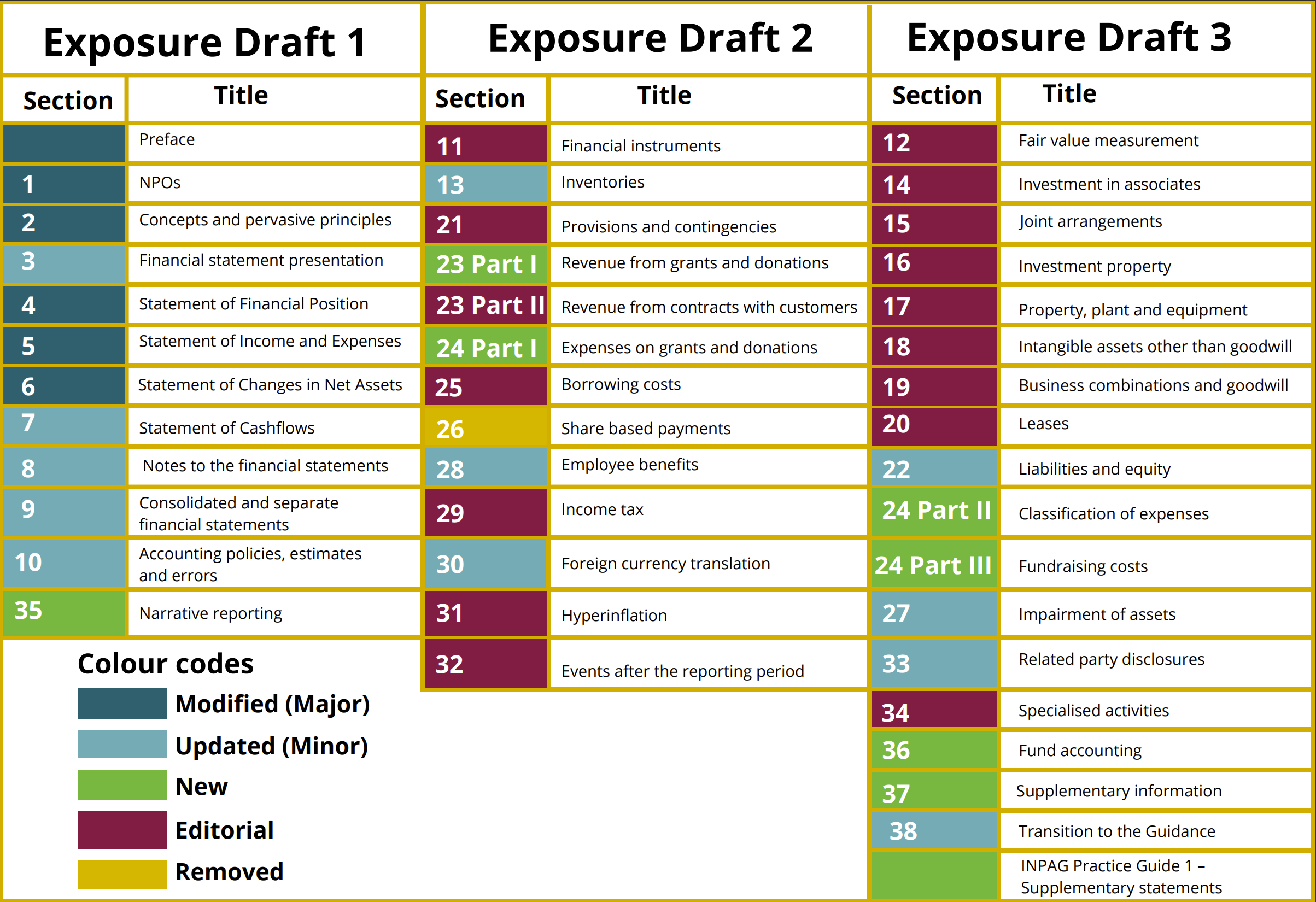
The overarching goals are to improve the usefulness, reliability and consistency of financial reports, while also reducing the burden on reporting NPOs due to multiple formats.
In the video, CIPFA’s INPAS Technical Director Karen Sanderson explains the objectives that have been front of mind while developing the standard.
The development process is guided by three groups of expert volunteer advisors: the Technical Advisory Group (TAG), the Practitioner Advisory Group (PAG) and the Donor Reference Group. You can see details of their roles, members and meetings below:
Technical Advisory Group – role & members | meetings
Practitioner Advisory Group – role & members | meetings
Donor Reference Group – member organisations